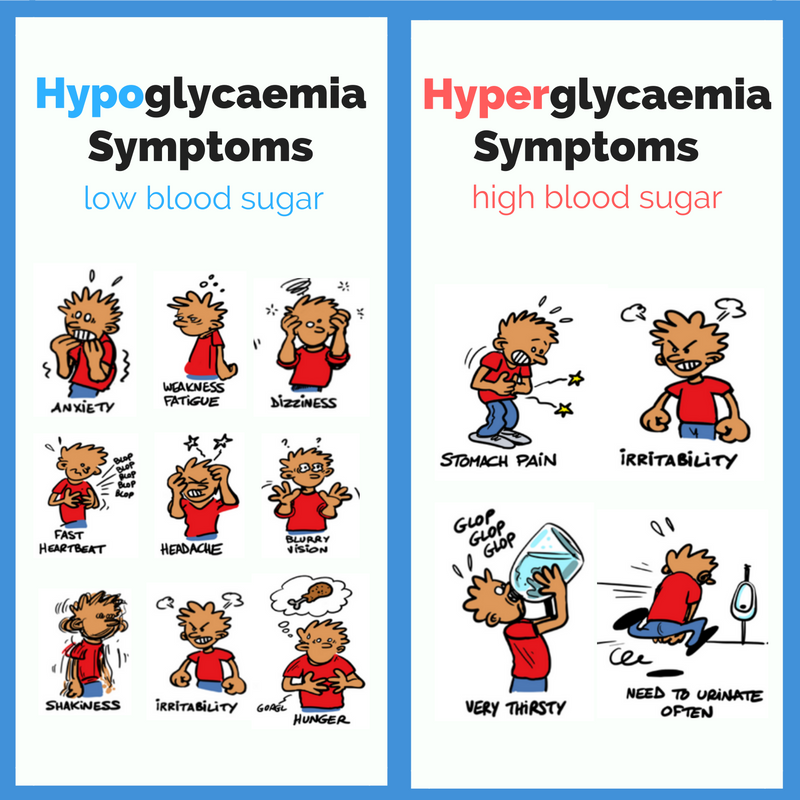Understanding the differences between hypoglycaemia (hypo) and hyperglycaemia (hyper) is crucial for effective management.

Image taken from Facebook page of Diabetes.co.uk
Hypoglycaemia (Hypo)
What happens?
Hypoglycaemia occurs when blood glucose levels drop too low, typically below 4mmol/L. This can happen if you take too much diabetes medication, particularly insulin, miss a meal, exercise more than usual, or consume alcohol without enough food. Your brain relies on glucose to function, so a significant drop can lead to confusion, dizziness, and in severe cases, unconsciousness.
Main Symptoms:
- Shaking and sweating
- Hunger
- Weakness or fatigue
- Irritability
- Blurred vision
- Difficulty concentrating
What to Do:
- Immediately consume 15-20g of fast-acting carbohydrates, such as glucose tablets, a small glass of fruit juice, or sugary sweets like jelly babies.
- Rest for 10-15 minutes, then recheck your blood glucose levels. If it’s still low, repeat the treatment.
- Once your levels return to normal, eat a slow-acting carbohydrate, like a slice of bread or a small bowl of cereal, to maintain stability.
What Not to Do:
- Do not delay treatment if you notice symptoms. Acting quickly is key to preventing a severe hypo.
- Avoid consuming foods with fat or protein initially, as these slow down glucose absorption.
Hyperglycaemia (Hyper)
What happens?
Hyperglycaemia occurs when blood glucose levels are too high, typically above 7mmol/L before a meal or above 8.5mmol/L two hours after a meal. This can be due to missing a dose of medication, overeating (especially carbohydrates), stress, or illness. If not managed, high blood sugar can lead to serious complications, such as diabetic ketoacidosis (DKA).
Main Symptoms:
- Increased thirst and frequent urination
- Fatigue
- Blurred vision
- Headaches
- Nausea
- Recurrent infections, like thrush
What to Do:
- Stay hydrated with water to avoid dehydration.
- Adjust your medication according to your healthcare team’s guidance. If your levels are very high (above 15mmol/L), check for ketones and seek medical advice as appropriate.
- Regularly monitor your blood sugar to prevent levels from rising too high.
What Not to Do:
- Do not ignore persistent high blood sugar. Prolonged hyperglycaemia increases the risk of complications such as neuropathy or retinopathy.
- Drinking excessive water alone won’t lower your blood sugar. Medication adjustments are necessary to bring levels down.
Managing Type 2 diabetes effectively involves recognising the symptoms of both hypo and hyper and taking prompt action to correct them.
Regular monitoring, appropriate medication, and maintaining a balanced diet and exercise routine are essential strategies.
Here are some great links for further information and research.
(Making Diabetes Easier) (Diabetes UK) (DiaTribe)
